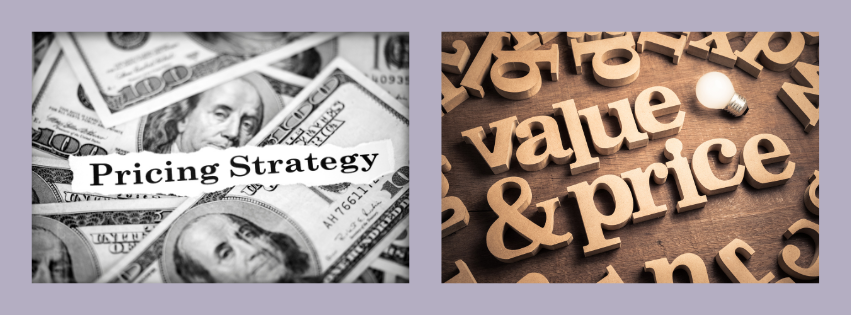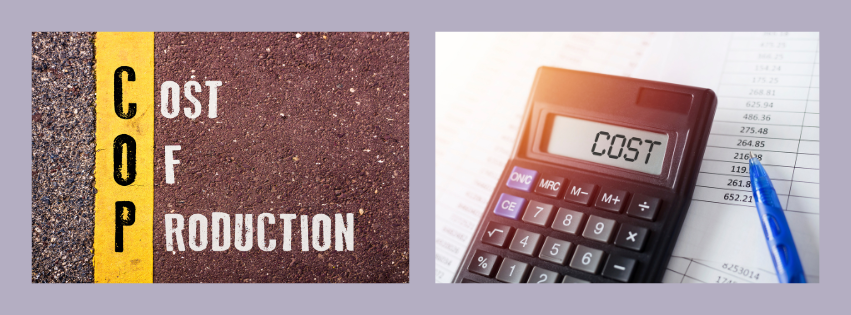Whenever I talk to a small business, pricing is one of the things that most struggle with. But just as you have a strategy for your business, and spend time marketing what you do, having a pricing strategy is just as important.
Pricing can be difficult to get your head around – for example, why are some products worth so much more than others, when they basically offer the same thing?
Settling on a pricing strategy
There are different ways to settle on a pricing strategy that will work for you – and lots of things to take into consideration, such as:
- Your customer – how much are they willing to pay for your products or services?
- Your competition – what is your competition charging?
- Costs – you need to know all your costs in order to be able to fix a price which makes you a profit.
So, you need to find a pricing strategy that offers good value to your customers, competes with your competitors, and gives you a profit. This isn’t an easy concept to grasp.
Pricing strategies for small businesses
There are loads of pricing strategies out there, but these are just a few that I think are more relevant to the smaller businesses that I interact and work with.
Competitor strategy
If your products are competing with lots of other businesses who do the same as you, competitor pricing or strategy might be the best way to go. First, you need to research your competitors to find out what they charge for similar products to yours, and then monitoring their prices to ensure that your prices are the same or slightly lower.
This is a strategy that is most commonly used by supermarkets.
Penetration pricing
If you’re just starting up, or you have new products that are like your competitors, this is a popular choice. You start by offering a low introductory price for your new product, (or products if you’re just starting) and then gradually increase the price as the market gets used to your brand.
Economy pricing
If you offer low cost, budget products, this is a good pricing strategy. But you MUST ensure that you’re able to produce bulk quantities for a low manufacturing cost and still be able to turn a profit.
Price anchoring
If you sell both premium and budget products, then this may work well for you. You can put your lower-priced alternative next to a similar premium product – customers are more likely to buy the cheaper model. This gives them an immediate comparison without having to look at other brands or businesses.
Psychology pricing
It probably won’t surprise you to know that emotion influences a lot of the things we buy. Psychology pricing is the way that businesses set their prices to influence how customers perceive the value of a product or service.
The typical way of doing this is pricing just below round numbers or choosing prices that make products seem more affordable or attractive. If something is priced at £300 for example, and the same thing is priced by another business at £299, it’s more likely to be bought at the lower cost – although there is only a penny difference in reality.
You also see this in advertising, when you see for example, ‘8 out of 10 cat owners agree that this cat food is the best’. If they said ‘80% of cat owners agree….’, consumers are more likely to think – mmm, well 20% of cat owners didn’t agree, so that’s not good. Saying 8 out of 10 is exactly the same – it just sounds better psychologically.
Another example, and this is a clever one! Two companies are putting out offers on their products. One offers ‘25% off’ and the other company is offering ‘buy one, get the other half price.’
Which would you go for?
In fact, they are both exactly the same. The only difference is that the second offer saves us having to work it out in our heads. And mentioning the word ‘half’ creates an illusion that we are receiving 50% off the original price, but you’re actually getting 25% off each product.
How do I work out the cost of each of my products or services?
Deciding which pricing strategy to go with is all very well, but you also need to ensure that you make a profit on the things you are selling. If you buy products in bulk at a cheaper price and then add what you want to make on top, that’s easy to calculate. But if you make your own products or offer a service it can be a little more complicated.
Products
You need to understand what costs you have.
- Materials – how much does it cost you to buy the raw materials to make your products?
- How many products can you make with those raw materials?
- Utilities – does it cost you money to produce your products (such as electricity to run machines, or maybe you use a lot of printer ink)?
- Time – how much time does it take you to make one product? This is something small businesses often forget. To price your time, you need to set yourself an hourly rate that you want to earn from your business, and you can then divide that hour into how many products you can make in that time.
- Packaging and postage – you need to also take this into consideration.
Once you have all the costs above you can work out the cost of each product.
I appreciate, as a small business myself, that the price you choose must be what your customers will pay on a consistent basis.
Services
Charging for your services is definitely challenging and one that I’ve struggled with a lot over the years. If your prices are too high, customers won’t come to you – and if your prices are too low, potential clients will think you are cheap or inexperienced. You must find the fine balance between the two.
As with a product business, your costs need to include admin and overhead expenses, as well as any materials you need to provide your service. There is no magic formula! As a service provider, you’ll probably find yourself changing your pricing from time to time, just as you’ll have to change your services to keep up with the latest trends.
- As a service provider, you MUST know your competition. As well as looking at what they’re charging, it’s important to know exactly what they provide for that cost. You’ll find some that are cheaper than you want to be (but do they have the same experience and skills as you)? You’ll also find those that charge much more than you are expecting, (do they have more experience and skills than you do)? Once you have this info, you’ll have a broad price range to start with.
- You also need to decide whether you will charge a flat rate or whether you will charge by the hour. This will depend on what services you offer. For example, I charge per hour for the coaching I offer, but for email set-up or social media content creation, I charge a flat rate, which has already considered the amount of time it takes me, plus overheads.
- You still need to know how much you expect to earn per hour – that is, how much is an hour of your time worth?
Finally, as a service provider, especially if you’re freelance, it’s worth remembering that you won’t be working a straight 8 –10-hour day and nor will you get paid for all the hours you do. Most freelancers find that only 50% of their time is billable. The other 50% is spent marketing their own business, finding new clients, and doing admin!
Conclusion
I hope this has helped you see pricing a little more clearly, although I realise it is always going to be a bit of a grey area!
So, to recap, do your research so you know what your competitors do. Take all your costs into account, including your time. Then decide what you’d like to earn per hour and go from there.
If you need any help, as always you can drop me a message. I’m happy to help.



